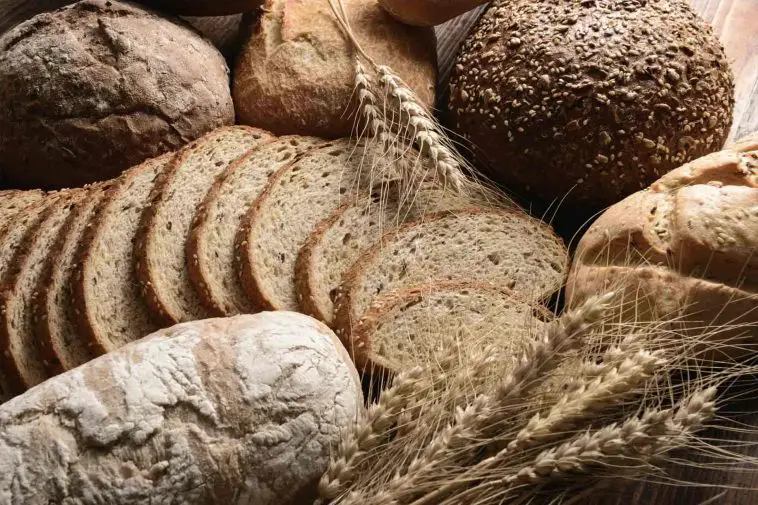Whole wheat and whole grain breads are staples in many diets, offering a range of health benefits and essential nutrients. Understanding the difference between these two types of bread is crucial for making informed dietary choices.
Whole wheat refers to products made exclusively from the entire wheat kernel, including the bran, germ, and endosperm. This ensures that all the natural nutrients and fiber of the wheat are retained. On the other hand, whole grain encompasses a broader category. It includes any grain that retains all parts of its original kernel, whether it’s wheat, barley, quinoa, or others.
Recognizing the distinction between whole wheat and whole grain is important not just for nutritional reasons, but also for dietary preferences and restrictions. This knowledge helps consumers make choices that align with their health goals and dietary needs.
What is Whole Grain?
Whole grains are grains that have retained all three key components of the original grain kernel: the bran, germ, and endosperm. This integral structure ensures that the grains provide their full nutritional benefits.
The types of whole grains are diverse, including:
- Barley
- Brown rice
- Buckwheat
- Bulgur (cracked wheat)
- Millet
- Oatmeal
- Popcorn
- Quinoa
- Whole rye
Whole grains are known for their comprehensive nutritional profile. Healthline provides an in-depth look into the benefits of whole grains.
What is Whole Wheat?
Whole wheat specifically refers to products made from the entire wheat kernel. This means that the bran, germ, and endosperm of the wheat grain are all present in the final product.
The nutritional profile of whole wheat is impressive, offering:
- High dietary fiber, which aids in digestion and maintains blood sugar levels.
- Essential B vitamins, such as niacin, thiamine, and folate, which play a role in energy production and brain health.
- Vital minerals like iron, magnesium, and selenium, contributing to overall health and well-being.
Whole wheat is a particularly good choice for maintaining heart health and supporting a balanced diet For more details on whole wheat, Verywell Fit offers a comprehensive guide.
Nutritional Comparison
When comparing the nutritional content of whole wheat and whole grain, it’s important to understand that both offer significant health benefits, though their nutritional profiles may differ slightly based on the type of grain.
Whole Wheat:
- Rich in fiber, aiding in digestion and satiety.
- Contains a good balance of carbohydrates and proteins.
- High in B vitamins and minerals like iron and magnesium.
Whole Grain:
- Offers a broader range of nutrients due to the variety of grains included.
- Typically higher in fiber compared to whole wheat alone.
- Contains essential fatty acids, antioxidants, and phytochemicals.
Both whole wheat and whole grain are beneficial for:
- Improving heart health by reducing cholesterol levels and blood pressure.
- Aiding in weight management due to their high fiber content.
- Lowering the risk of chronic diseases such as type 2 diabetes and certain cancers.
Incorporating a mix of whole wheat and whole grain products into your diet can provide a comprehensive range of nutrients for optimal health.
Whole Grain vs. Whole Wheat: Understanding the Difference
The key differences between whole grain and whole wheat lie in their composition and the impact they have on health and nutrition.
Composition:
- Whole grain products include any grain in its whole form, such as barley, oats, or brown rice, along with wheat. They contain all parts of the grain kernel – bran, germ, and endosperm.
- Whole wheat specifically refers to the whole form of the wheat grain only.
Impact on Health and Nutrition:
- Whole grain foods offer a diverse range of nutrients since they can include multiple types of grains. This variety can lead to a broader spectrum of health benefits, including improved gut health and a reduced risk of chronic diseases.
- Whole wheat is particularly rich in fiber and specific nutrients like magnesium and selenium, which are crucial for heart health and metabolic processes.
Both whole grain and whole wheat are integral to a balanced diet, but the variety in whole grains can offer a more comprehensive nutritional profile.
Misconceptions and Labeling
Misleading labels in the market can make it challenging to identify genuine whole grain and whole wheat products.
- Products labeled as “multigrain” or “made with whole grains” may only contain a small proportion of whole grains.
- “Wheat bread” is not necessarily whole wheat; it may be predominantly made from refined flour with a minimal amount of whole wheat.
To ensure you’re choosing true whole grain or whole wheat products, look for labels that state “100% whole grain” or “100% whole wheat.” Also, check the ingredients list – whole grains should be listed as the first ingredient.
FAQs
Is whole wheat bread healthier than whole grain bread?
- Both are healthy options. Whole wheat is a type of whole grain, so it shares many of the same benefits. The choice depends on your preference for taste and texture, as well as any specific dietary needs.
Can people with gluten intolerance eat whole wheat or whole grain bread?
- Whole wheat contains gluten, so it’s not suitable for those with gluten intolerance or celiac disease. However, some whole grain breads are made from gluten-free grains like quinoa or buckwheat.
Does whole grain bread have more fiber than whole wheat bread?
- This can vary depending on the specific grains used. Generally, both whole grain and whole wheat are excellent sources of fiber.
Are there any downsides to eating whole grain or whole wheat bread?
- For most people, these breads are a healthy choice. However, those with certain dietary restrictions, like a low-carb or gluten-free diet, may need to limit or avoid them.






Comments
Loading…